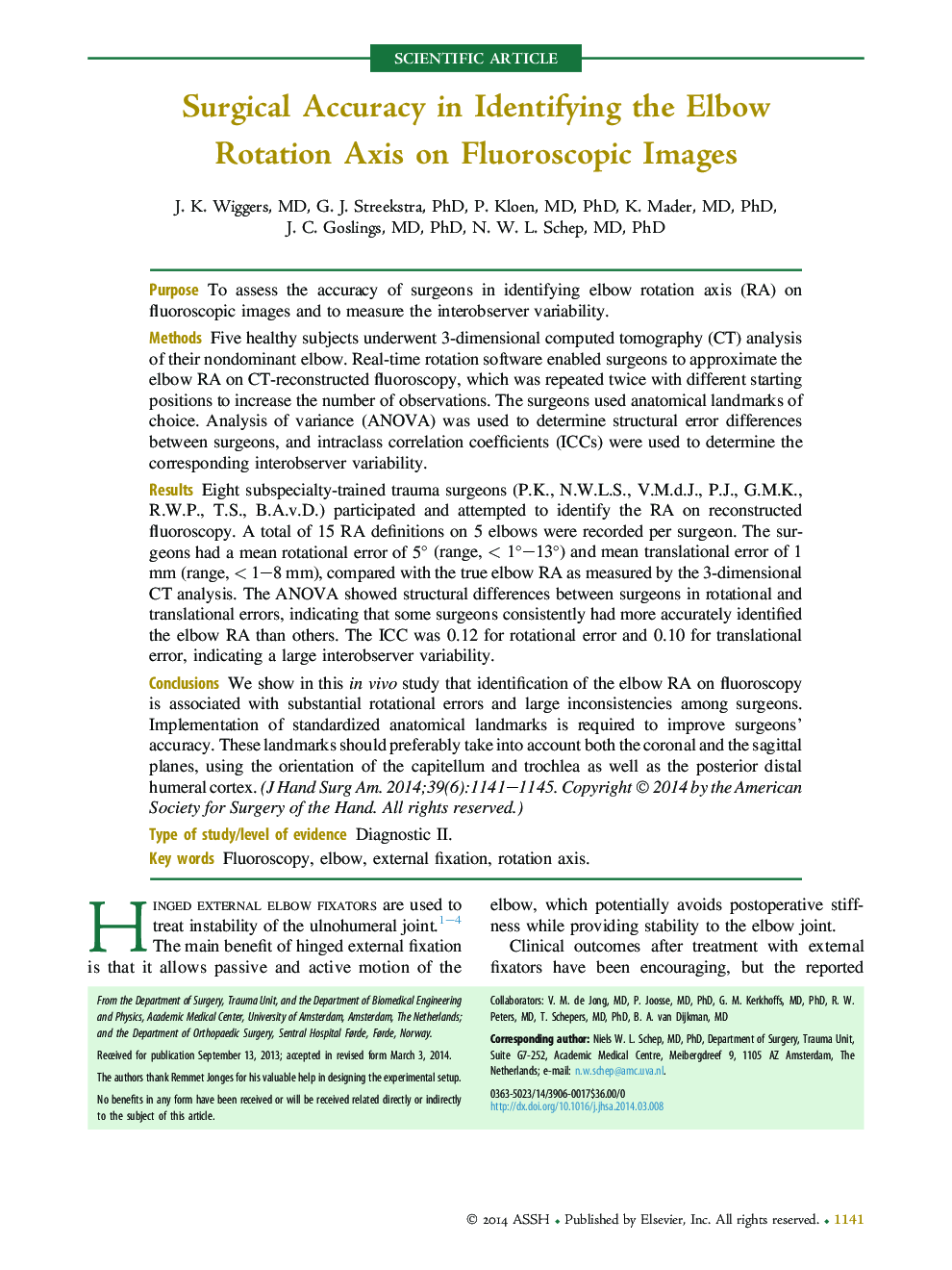| کد مقاله | کد نشریه | سال انتشار | مقاله انگلیسی | نسخه تمام متن |
|---|---|---|---|---|
| 4067966 | 1604369 | 2014 | 5 صفحه PDF | دانلود رایگان |
PurposeTo assess the accuracy of surgeons in identifying elbow rotation axis (RA) on fluoroscopic images and to measure the interobserver variability.MethodsFive healthy subjects underwent 3-dimensional computed tomography (CT) analysis of their nondominant elbow. Real-time rotation software enabled surgeons to approximate the elbow RA on CT-reconstructed fluoroscopy, which was repeated twice with different starting positions to increase the number of observations. The surgeons used anatomical landmarks of choice. Analysis of variance (ANOVA) was used to determine structural error differences between surgeons, and intraclass correlation coefficients (ICCs) were used to determine the corresponding interobserver variability.ResultsEight subspecialty-trained trauma surgeons (P.K., N.W.L.S., V.M.d.J., P.J., G.M.K., R.W.P., T.S., B.A.v.D.) participated and attempted to identify the RA on reconstructed fluoroscopy. A total of 15 RA definitions on 5 elbows were recorded per surgeon. The surgeons had a mean rotational error of 5° (range, < 1°–13°) and mean translational error of 1 mm (range, < 1–8 mm), compared with the true elbow RA as measured by the 3-dimensional CT analysis. The ANOVA showed structural differences between surgeons in rotational and translational errors, indicating that some surgeons consistently had more accurately identified the elbow RA than others. The ICC was 0.12 for rotational error and 0.10 for translational error, indicating a large interobserver variability.ConclusionsWe show in this in vivo study that identification of the elbow RA on fluoroscopy is associated with substantial rotational errors and large inconsistencies among surgeons. Implementation of standardized anatomical landmarks is required to improve surgeons' accuracy. These landmarks should preferably take into account both the coronal and the sagittal planes, using the orientation of the capitellum and trochlea as well as the posterior distal humeral cortex.Type of study/level of evidenceDiagnostic II.
Journal: The Journal of Hand Surgery - Volume 39, Issue 6, June 2014, Pages 1141–1145
